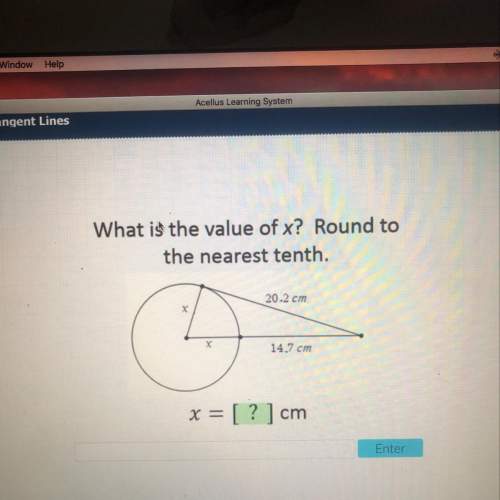
Mathematics, 22.07.2021 01:00 kaiyah2021
A certain virus infects one in every 300 people. A test used to detect the virus in a person is positive 85% of the time if the person has the virus and 5% of the time if the person does not have the virus. (This 5% result is called a false positive.) Let A be the event "the person is infected" and B be the event "the person tests positive". a) Find the probability that a person has the virus given that they have tested positive, i. e. find P(A/B). Round your answer to the nearest tenth of a percent and do not include a percent sign. P( AB)= % b) Find the probability that a person does not have the virus given that they test negative, i. e. find P(A' B'). Round your answer to the nearest tenth of a percent and do not include a percent sign. P(A'B') = %

Answers: 2


Another question on Mathematics

Mathematics, 21.06.2019 17:00
What is the difference between the points (4, 7) and (4, -5)? a. 0 units b. 2 units c. 4 units d. 12 units
Answers: 1

Mathematics, 21.06.2019 18:30
Hii1977 cleaner shrimp are a species of shrimp that clean parasites from other organisms. fish allow the shrimp to eat the parasites in their mouth. the shrimp get a source of nutrition. the relationship between the shrimp and the fish is this association indicates that for the smaill aneser arecommensal,mutualistic,or parasitic for the begger one the anser are the shrimp and fish benefit each other , the shrimp harm the fish, or the fish do not benetit from the shrimp
Answers: 3


You know the right answer?
A certain virus infects one in every 300 people. A test used to detect the virus in a person is posi...
Questions

Business, 23.09.2021 14:00

Mathematics, 23.09.2021 14:00

Mathematics, 23.09.2021 14:00


Mathematics, 23.09.2021 14:00



English, 23.09.2021 14:00

History, 23.09.2021 14:00

Mathematics, 23.09.2021 14:00



History, 23.09.2021 14:00

Mathematics, 23.09.2021 14:00


Mathematics, 23.09.2021 14:00

Mathematics, 23.09.2021 14:00



Mathematics, 23.09.2021 14:00




